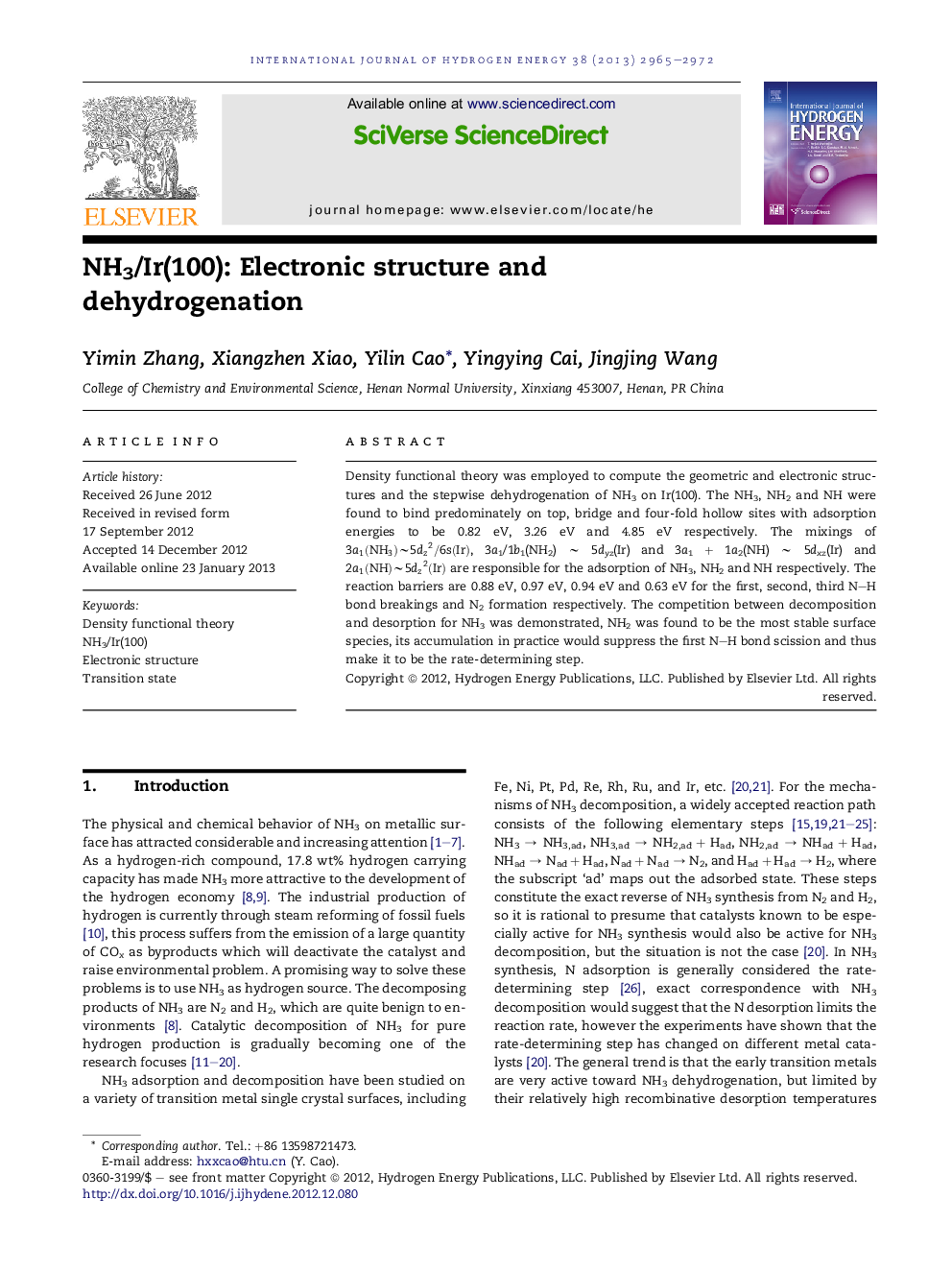| Article ID | Journal | Published Year | Pages | File Type |
|---|---|---|---|---|
| 1281961 | International Journal of Hydrogen Energy | 2013 | 8 Pages |
Density functional theory was employed to compute the geometric and electronic structures and the stepwise dehydrogenation of NH3 on Ir(100). The NH3, NH2 and NH were found to bind predominately on top, bridge and four-fold hollow sites with adsorption energies to be 0.82 eV, 3.26 eV and 4.85 eV respectively. The mixings of 3a1(NH3)∼5dz2/6s(Ir)3a1(NH3)∼5dz2/6s(Ir), 3a1/1b1(NH2) ∼ 5dyz(Ir) and 3a1 + 1a2(NH) ∼ 5dxz(Ir) and 2a1(NH)∼5dz2(Ir)2a1(NH)∼5dz2(Ir) are responsible for the adsorption of NH3, NH2 and NH respectively. The reaction barriers are 0.88 eV, 0.97 eV, 0.94 eV and 0.63 eV for the first, second, third N–H bond breakings and N2 formation respectively. The competition between decomposition and desorption for NH3 was demonstrated, NH2 was found to be the most stable surface species, its accumulation in practice would suppress the first N–H bond scission and thus make it to be the rate-determining step.
► Detailed electronic structure analysis of NHx/Ir(100). ► Theoretical understanding of dehydrogenation mechanism. ► Dynamics analysis and rate-limited step.
